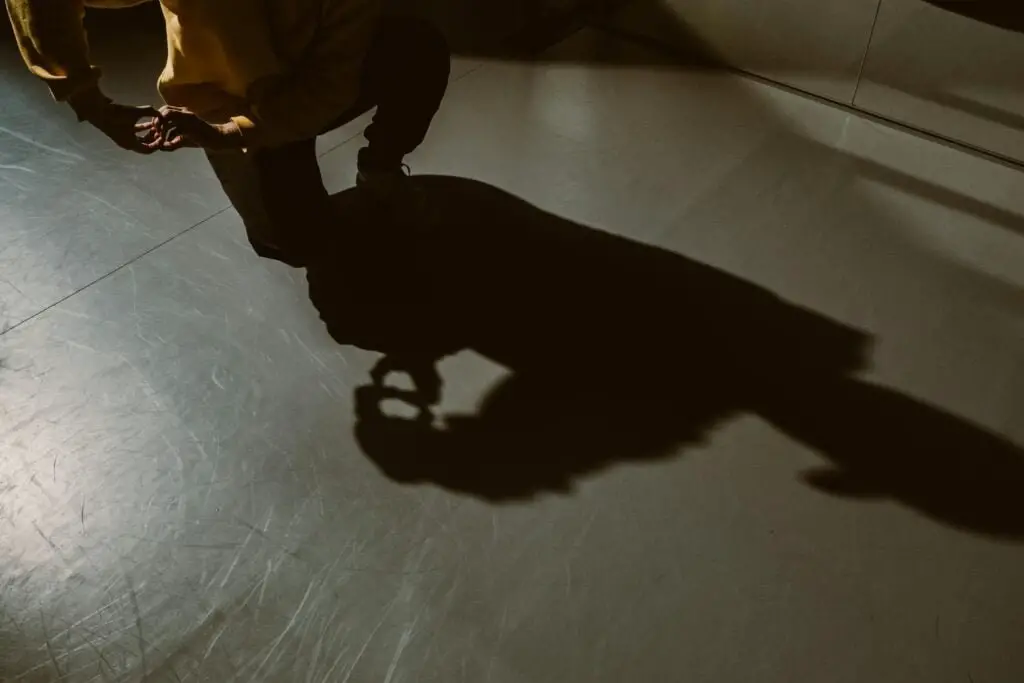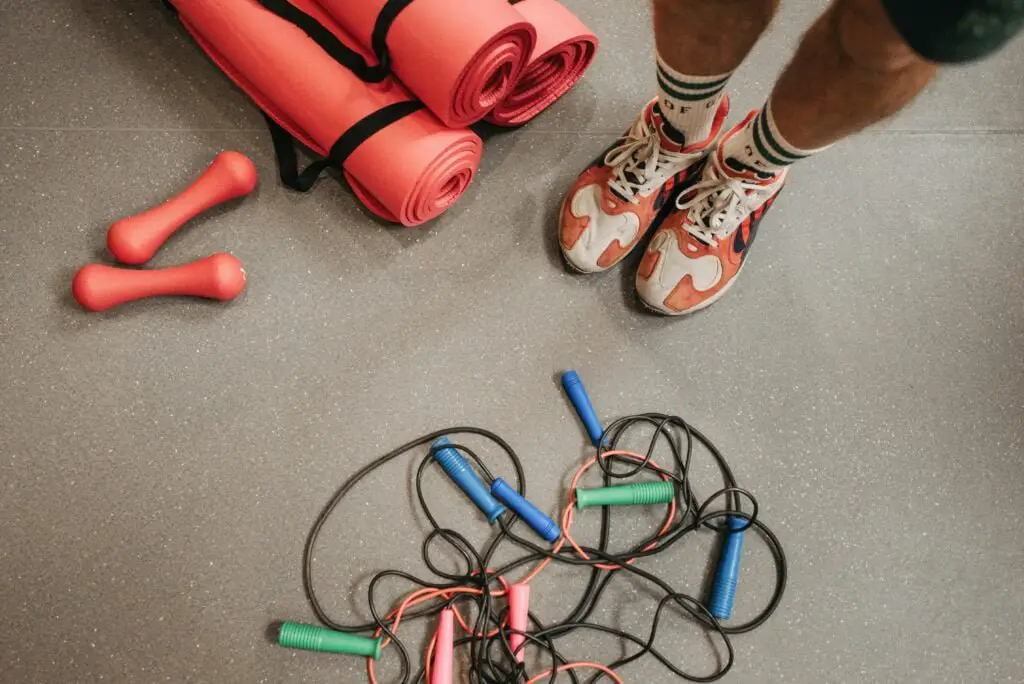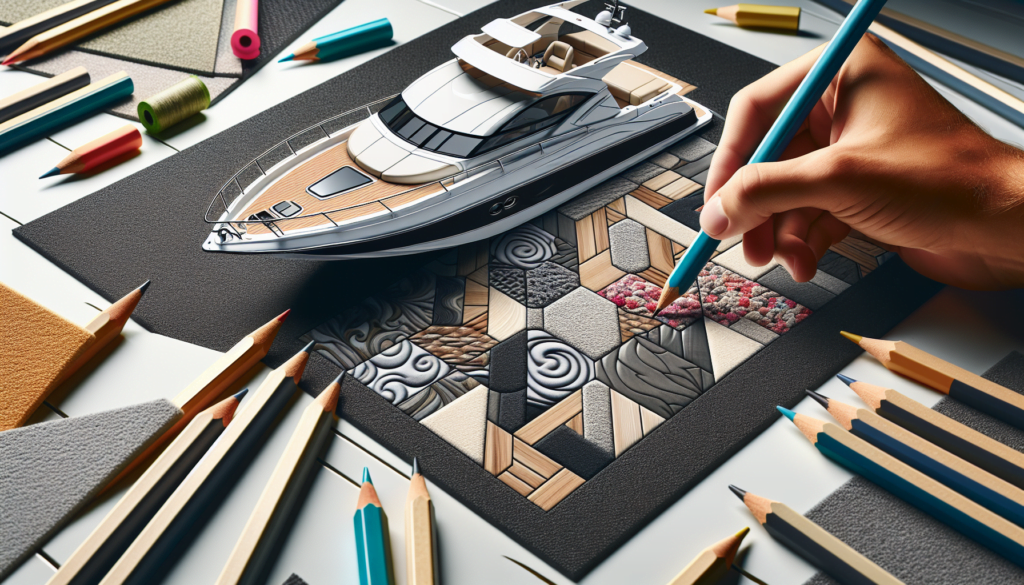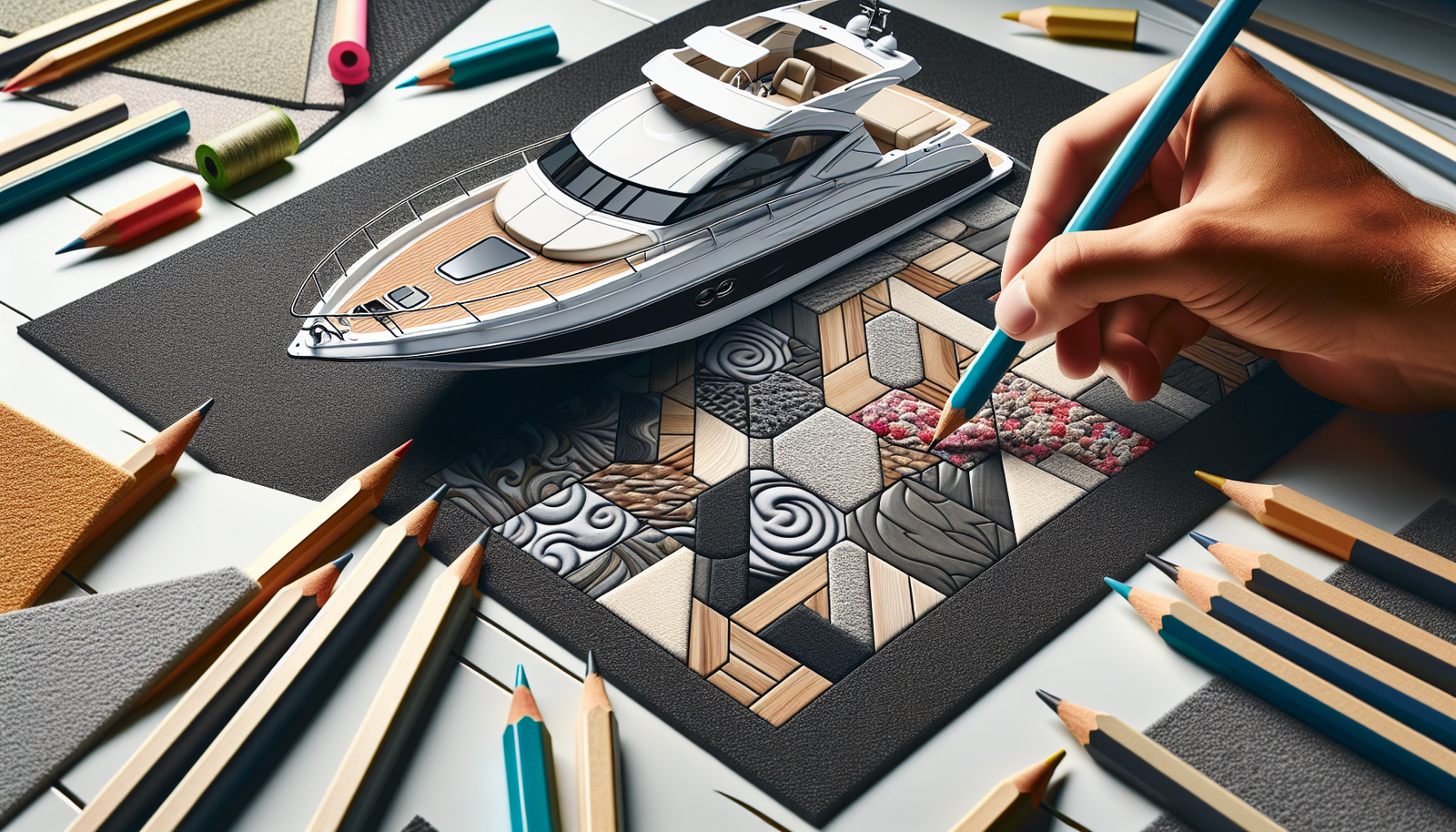If you’re looking to give your boat a personal touch and make it stand out from the crowd, one of the best ways to do so is by customizing its flooring. Whether you’re a seasoned sailor or a casual weekend boater, a unique and stylish flooring can transform the entire look and feel of your vessel. From high-quality marine carpeting to luxurious teak wood, there are numerous options available to suit every taste and budget. In this article, we will explore the best ways to customize your boat’s flooring, helping you create the perfect onboard oasis that reflects your individual style and enhances your overall boating experience.

Carpet
Carpet is a popular choice for boat flooring due to its comfort and aesthetic appeal. There are various types of carpet available, including marine-grade carpet that is specifically designed for boat use. Marine carpet is made from synthetic fibers that are resistant to mold and mildew, making it perfect for a marine environment. It comes in a range of colors and styles to suit different preferences.
One of the main advantages of carpet flooring is its comfort. Walking on a plush carpet feels great under your feet, especially when you’re spending long hours on the boat. Carpet also provides insulation, keeping the floor warm during colder weather. In addition, it helps reduce noise, making your boat a quieter and more enjoyable space.
However, there are a few drawbacks to consider when it comes to carpet flooring. First, it requires regular cleaning and maintenance to keep it looking and smelling fresh. Carpet can also be prone to stains and odors, particularly if not properly cared for. Additionally, if water gets trapped underneath the carpet, it can lead to mold growth, which can be harmful to your health and the integrity of your boat’s flooring.
The installation process for carpet flooring involves measuring and cutting the carpet to fit the boat’s floor. It is usually secured with adhesive or snaps, depending on the type of carpet and the manufacturer’s recommendations. Proper installation is important to ensure a smooth and secure carpeted surface.
To maintain your carpet flooring, it’s essential to regularly vacuum and spot clean any stains. You may also want to consider using a carpet cleaner specifically designed for marine carpet. It is important to let the carpet fully dry after cleaning to prevent mold and mildew growth. In addition, periodic deep cleaning may be necessary to remove embedded dirt and grime.
Vinyl
Vinyl flooring is another popular option for boat flooring, offering durability and a wide range of design options. It is available in different types, including luxury vinyl plank and sheet vinyl. Luxury vinyl plank mimics the look of hardwood flooring, while sheet vinyl provides a seamless finish.
There are several benefits to choosing vinyl flooring for your boat. First and foremost, vinyl is highly resistant to water, making it a suitable choice for a marine environment. It is also easy to clean and maintain, as it can be wiped down with a damp cloth or mopped. Vinyl flooring is also resilient and can withstand heavy foot traffic without showing signs of wear and tear.
However, there are also a few drawbacks to consider. Vinyl flooring can be susceptible to scratches and dents, so it is important to take precautions to avoid damage. It may also feel colder underfoot compared to other flooring options, especially during the winter months. Additionally, certain types of vinyl flooring may emit volatile organic compounds (VOCs), which can be harmful when inhaled. It is important to choose low VOC or VOC-free vinyl flooring to minimize any health risks.
The installation methods for vinyl flooring depend on the type you choose. Luxury vinyl plank is typically installed as a floating floor, which means it is not glued down but rather clicks together using a tongue-and-groove system. Sheet vinyl, on the other hand, is typically adhered to the boat’s floor using adhesive.
To clean and maintain vinyl flooring, regular sweeping or vacuuming is recommended to remove dust and debris. Spills should be wiped up immediately to prevent staining. For deeper cleaning, you can use a mild cleaner and a soft mop or cloth. It is important to avoid using abrasive cleaners or tools that could scratch the surface of the vinyl.
Teak
Teak wood flooring is a luxurious and durable option for boat flooring. Teak is known for its beauty and natural resistance to water, making it highly desirable for marine applications. It is a hardwood that is often used in boat building and is known for its rich, golden-brown color and distinctive grain patterns.
One of the main advantages of teak flooring is its durability. Teak is naturally resistant to rot, warping, and pests, making it a long-lasting choice for boat flooring. It can withstand the harsh marine environment, including exposure to saltwater and UV rays. Teak also has excellent grip, even when wet, which is an important safety feature on a boat.
However, there are a few disadvantages to consider. Teak wood is a premium option and can be quite expensive compared to other flooring materials. It also requires regular maintenance to keep its appearance and prevent it from weathering. Without proper care, teak can fade and develop a grayish color over time. Additionally, teak flooring can be slippery when wet, so it may not be suitable for all areas of the boat.
The installation techniques for teak flooring can vary, but it often involves cutting the teak planks to fit the boat’s floor and securing them with adhesive or screws. It is important to ensure proper spacing between the planks to allow for expansion and contraction due to temperature and humidity changes.
To care for teak flooring, regular cleaning is necessary to remove dirt and salt build-up. You can use a mild detergent or teak cleaner and a soft brush to scrub the surface. It is important to rinse thoroughly and allow the teak to dry completely before applying any protective treatments. To maintain its natural color and protect it from the elements, teak oil or sealant can be applied periodically.
EVA Foam
EVA foam flooring is a versatile and comfortable option for boat flooring. EVA stands for ethylene-vinyl acetate, which is a lightweight and durable material commonly used in sports equipment and marine applications. EVA foam flooring comes in the form of interlocking tiles or sheets, providing a cushioned surface that is easy to install and maintain.
There are several benefits to choosing EVA foam for your boat flooring. First and foremost, it offers excellent comfort and shock absorption, making it a great choice for long hours spent on the boat. EVA foam is also resistant to water, mold, and mildew, making it suitable for a marine environment. It provides good traction even when wet, reducing the risk of slips and falls. Additionally, EVA foam is easy to clean and maintain, requiring only regular sweeping or mopping to remove dust and debris.
However, there are a few drawbacks to consider. EVA foam flooring can be sensitive to UV rays and may fade or deteriorate over time with prolonged exposure to sunlight. It can also be prone to dents and punctures if heavy objects are dropped on it. Additionally, although EVA foam is generally durable, it may not withstand sharp objects or high heels.
The installation process for EVA foam flooring is relatively simple. Interlocking tiles can be easily laid down and connected together, creating a seamless and customizable surface. Sheets of EVA foam can be cut to fit the boat’s floor and then adhered with adhesive or double-sided tape.
To clean and maintain EVA foam flooring, regular sweeping or mopping is recommended. Spills should be wiped up immediately to prevent staining. You can use a mild detergent or EVA foam cleaner for deeper cleaning, following the manufacturer’s instructions. It is important to avoid using abrasive cleaners or tools that could damage the surface of the foam.

Rubber
Rubber flooring is a durable and resilient option for boat flooring. It is often made from recycled rubber, making it an environmentally-friendly choice. Rubber flooring comes in various forms, including mats, tiles, and rolls, allowing for easy installation and customization.
There are several advantages to choosing rubber flooring for your boat. First and foremost, rubber is highly resistant to water, making it suitable for a marine environment. It is also slip-resistant, even when wet, providing a safe surface to walk on. Rubber flooring offers excellent impact absorption, reducing fatigue and strain on your joints. Additionally, it is easy to clean and maintain, requiring only regular sweeping or mopping to remove dust and debris.
However, there are a few drawbacks to consider. Rubber flooring can be susceptible to fading and discoloration with prolonged exposure to sunlight. It may also have a strong odor when initially installed, although this typically dissipates over time. Additionally, certain types of rubber flooring may contain chemicals that could pose health risks, so it is important to choose low VOC or VOC-free options.
The installation methods for rubber flooring vary depending on the type you choose. Rubber mats can simply be placed on the boat’s floor, while rubber tiles or rolls may require adhesive or double-sided tape for proper installation.
To clean rubber flooring, regular sweeping or mopping is recommended. Spills should be wiped up immediately to prevent staining. For deeper cleaning, you can use a mild detergent or rubber floor cleaner, following the manufacturer’s instructions. It is important to avoid using harsh chemicals or abrasive tools that could damage the rubber surface.
Marine-Grade Plywood
Marine-grade plywood is a strong and durable option for boat flooring. It is specifically designed to withstand the harsh marine environment, including exposure to water, salt, and UV rays. Marine-grade plywood is typically made with waterproof adhesives and treated with preservatives to enhance its resistance to rot and decay.
There are several benefits to using marine-grade plywood for your boat flooring. First and foremost, it offers excellent strength and durability, making it suitable for high-traffic areas. Marine-grade plywood is also resistant to warping and cracking, ensuring a stable and long-lasting flooring option. Additionally, it can be easily cut and shaped to fit the contours of your boat, allowing for customization.
However, there are a few drawbacks to consider. Marine-grade plywood can be quite heavy, which may not be ideal for certain boat types. It also requires regular maintenance to protect it from moisture and prevent rot. Additionally, marine-grade plywood may be more expensive compared to other flooring materials, but its durability and longevity often offset the initial cost.
The installation techniques for marine-grade plywood flooring can vary, but it often involves measuring and cutting the plywood to fit the boat’s floor. It is typically secured with screws, nails, or adhesive, depending on the manufacturer’s recommendations. Proper installation is important to ensure a secure and stable flooring surface.
To maintain marine-grade plywood flooring, regular cleaning is necessary to remove dirt and salt build-up. You can use a mild detergent and a soft brush to scrub the surface, rinsing thoroughly and allowing it to dry completely. It is also important to periodically inspect the plywood for any signs of damage or moisture penetration.

Synthetic Grass
Synthetic grass, also known as artificial turf, is a unique and eye-catching option for boat flooring. It mimics the look and feel of natural grass without the maintenance and upkeep. Synthetic grass is typically made from synthetic fibers that are UV-stabilized to prevent fading and deterioration.
There are several advantages to choosing synthetic grass for your boat flooring. First and foremost, it provides a lush and vibrant appearance, adding a touch of greenery to your boat. Synthetic grass is also highly durable and resistant to wear and tear, making it suitable for high-traffic areas. It is easy to clean and maintain, requiring only regular sweeping or hosing down to remove dirt and debris.
However, there are a few drawbacks to consider. Synthetic grass can retain heat and become hot to the touch, making it less comfortable to walk on during hot weather. It may also have a distinct odor when initially installed, although this typically dissipates over time. Additionally, some types of synthetic grass may not be suitable for saltwater exposure, so it is important to choose a marine-grade option.
The installation process for synthetic grass involves measuring and cutting the grass to fit the boat’s floor. It is typically adhered with adhesive or secured with screws or nails, depending on the type of surface and the manufacturer’s recommendations. Proper installation is important to ensure a smooth and seamless grassy surface.
To clean and care for synthetic grass flooring, regular sweeping or hosing down is recommended to remove dirt and debris. You can also use a mild detergent and a soft brush to spot clean any stains. It is important to avoid using harsh chemicals or abrasive tools that could damage the synthetic grass fibers.
Fiberglass
Fiberglass flooring is a popular choice for boats, offering a sleek and modern look. Fiberglass is a composite material made from a combination of resin and glass fibers, creating a strong and lightweight surface. It is often used for boat hulls but can also be used for interior flooring.
There are several benefits to choosing fiberglass flooring for your boat. First and foremost, fiberglass is highly durable and resistant to water, making it suitable for a marine environment. It is also easy to clean and maintain, requiring only regular wiping or mopping to remove dust and dirt. Fiberglass offers a smooth and seamless surface, enhancing the overall appearance of your boat’s interior.
However, there are a few drawbacks to consider. Fiberglass can be prone to scratches and dents, so it is important to take precautions to avoid damage. It may also feel cold underfoot, especially during colder weather or if not properly insulated. Additionally, fiberglass can be slippery when wet, so it may not be suitable for all areas of the boat.
The installation methods for fiberglass flooring can vary, but it often involves cutting the fiberglass sheets or panels to fit the boat’s floor and then adhering them with adhesive or securing them with screws. It is important to ensure a proper fit and a smooth surface to avoid any potential issues.
To maintain fiberglass flooring, regular wiping or mopping is recommended to remove dust and dirt. Spills should be wiped up immediately to prevent staining. You can use a mild detergent and a soft cloth or mop for deeper cleaning. It is important to avoid using abrasive cleaners or tools that could scratch the surface of the fiberglass.

Aluminum
Aluminum flooring is a lightweight and durable option for boat flooring. It is often used in aluminum boats due to its compatibility and corrosion resistance. Aluminum flooring offers a sleek and modern appearance, adding a touch of sophistication to your boat’s interior.
There are several advantages to choosing aluminum flooring for your boat. First and foremost, aluminum is highly resistant to water, making it suitable for a marine environment. It is also easy to clean and maintain, requiring only regular wiping or mopping to remove dust and dirt. Aluminum flooring offers excellent durability and can withstand heavy foot traffic without showing signs of wear and tear.
However, there are a few drawbacks to consider. Aluminum can be prone to scratches and dents, so it is important to take precautions to avoid damage. It may also feel cold underfoot, particularly during colder weather. Additionally, aluminum can be slippery when wet, so it is important to choose a textured or non-slip surface.
The installation techniques for aluminum flooring can vary, but it often involves cutting the aluminum sheets or panels to fit the boat’s floor and then securing them with screws or adhesive. Proper installation is important to ensure a secure and stable flooring surface.
To clean and maintain aluminum flooring, regular wiping or mopping is recommended to remove dust and dirt. Spills should be wiped up immediately to prevent staining. You can use a mild detergent and a soft cloth or mop for deeper cleaning. It is important to avoid using abrasive cleaners or tools that could scratch the surface of the aluminum.
Cork
Cork flooring is a unique and eco-friendly option for boat flooring. It is made from the bark of the cork oak tree and offers natural beauty and warmth. Cork is known for its excellent thermal and acoustic insulation properties, making it a comfortable and quiet choice for boat flooring.
There are several benefits to choosing cork flooring for your boat. First and foremost, cork is a sustainable material that can be harvested without harming the tree. It is also highly resilient and can withstand heavy foot traffic without showing signs of wear and tear. Cork offers excellent grip, even when wet, reducing the risk of slips and falls. Additionally, it is resistant to mold, mildew, and pests, making it suitable for a marine environment.
However, there are a few drawbacks to consider. Cork flooring can be prone to fading with prolonged exposure to sunlight, so it is important to take precautions to protect it. It may also be more susceptible to scratches and dents compared to other flooring options. Additionally, cork flooring requires regular maintenance to keep it looking its best and prevent moisture penetration.
The installation process for cork flooring involves cutting the cork tiles or planks to fit the boat’s floor and then adhering them with adhesive or securing them with screws. It is important to ensure a proper fit and a smooth surface for a seamless finish.
To maintain cork flooring, regular sweeping or dry mopping is recommended to remove dust and dirt. Spills should be wiped up immediately to prevent staining. You can use a mild detergent and a damp mop for deeper cleaning. It is important to avoid using excessive water or harsh chemicals that could damage the cork surface. Additionally, periodic sealing may be necessary to protect the cork from moisture and maintain its appearance.


